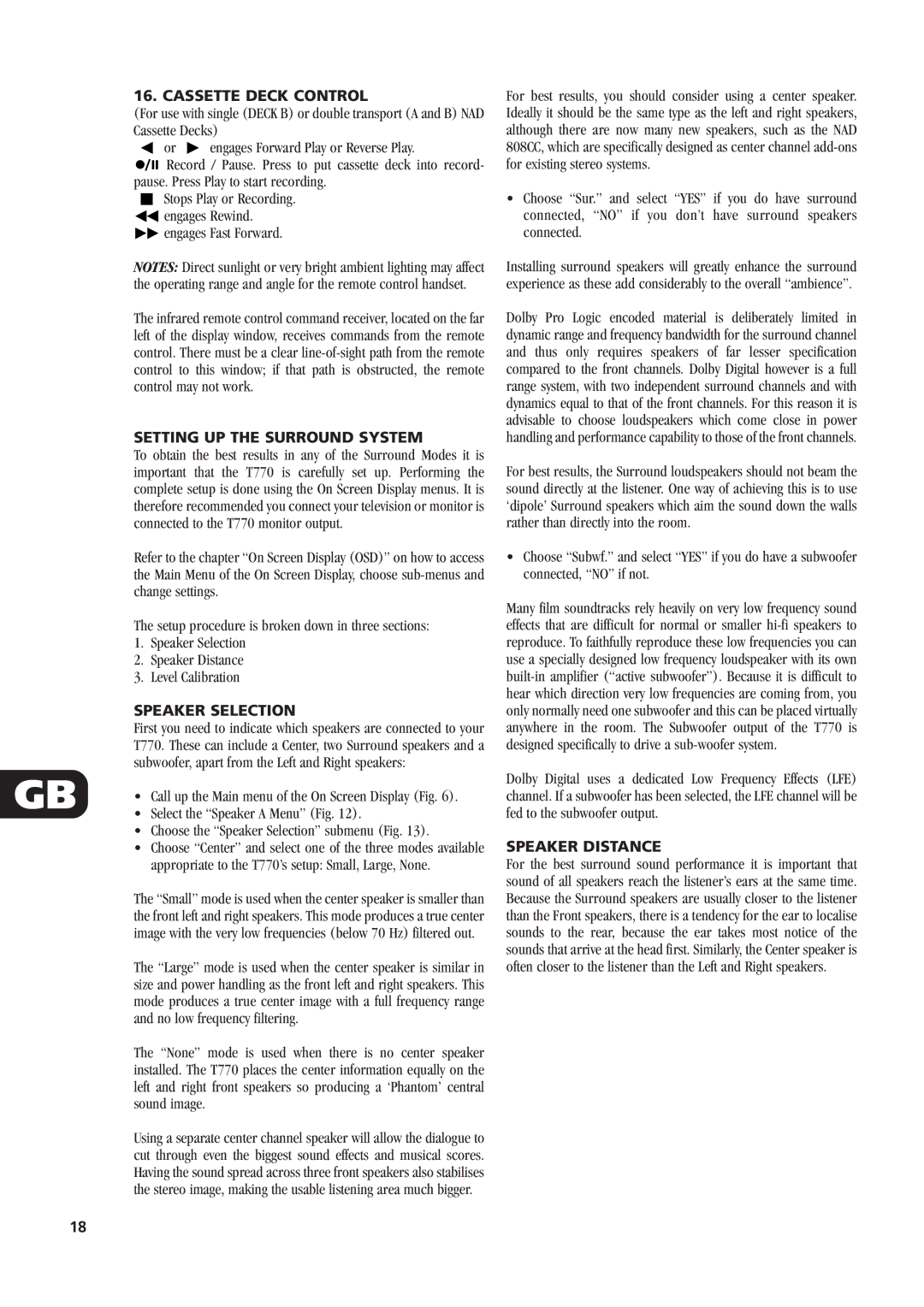T770 specifications
The NAD T770 is a versatile and powerful AV receiver designed to cater to the needs of modern home entertainment systems. Known for its exceptional audio quality and advanced technology, the T770 has garnered attention from audiophiles and home theater enthusiasts alike.One of the standout features of the NAD T770 is its high-quality audio performance. It utilizes NAD's proprietary Hypex NCore amplifier technology, which ensures a clean and distortion-free output, delivering a remarkably accurate sound stage. This technology not only enhances the overall listening experience but also provides ample power to drive a wide range of speakers, making the T770 suitable for various configurations from stereo to multi-channel setups.
The T770 supports a multitude of audio formats, including Dolby Atmos and DTS:X, enabling immersive surround sound experiences that transport viewers right into the heart of their favorite movies and music. This level of support ensures that users can enjoy the latest cinematic technologies, enhancing not just movies but also video games and music.
On the connectivity front, the NAD T770 is equipped with multiple HDMI inputs, all supporting 4K video pass-through and HDCP 2.2 compliance, ensuring compatibility with the latest video sources. In addition to HDMI, it offers a range of options, including digital and analog audio inputs, as well as a built-in Bluetooth feature for seamless wireless audio streaming from compatible devices.
In terms of user experience, the NAD T770 comes with an intuitive on-screen interface that simplifies setup and adjustments. Users can easily navigate through various settings to customize their audio and video preferences, making it easy to create an optimal listening environment.
Moreover, the T770 features a robust room correction technology, which analyzes the specific acoustic properties of the room and automatically adjusts the speaker output for optimal performance. This adaptability is essential for users aiming to achieve the best sound in various environments.
Environmentally conscious consumers will appreciate the NAD T770's Energy Star certification, which signifies that it meets stringent energy efficiency guidelines while maintaining high performance.
In summary, the NAD T770 is more than just an AV receiver; it's a comprehensive home entertainment solution that combines cutting-edge technology with superior sound quality, offering users a rich audio experience tailored to their needs. Whether enjoying movies, music, or gaming, the T770 stands out as a reliable choice.

